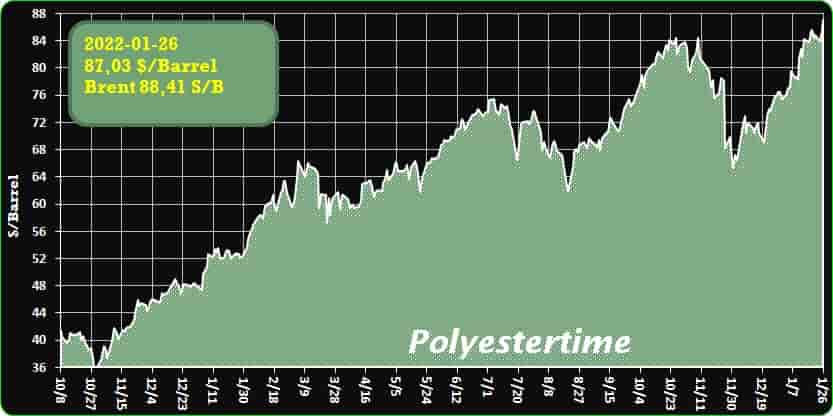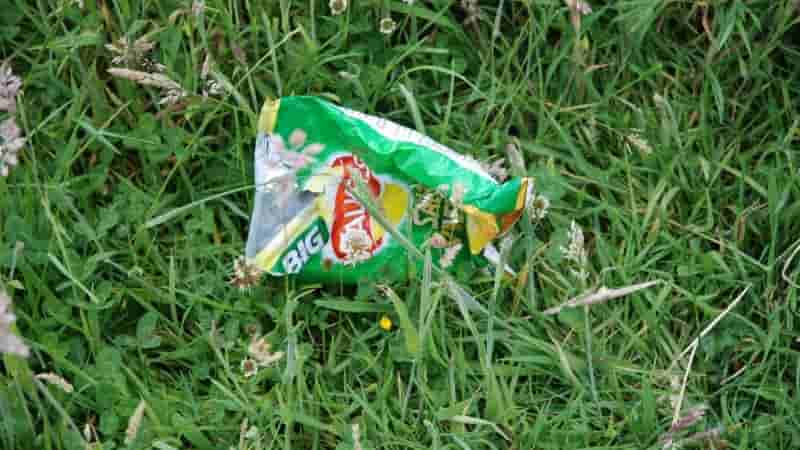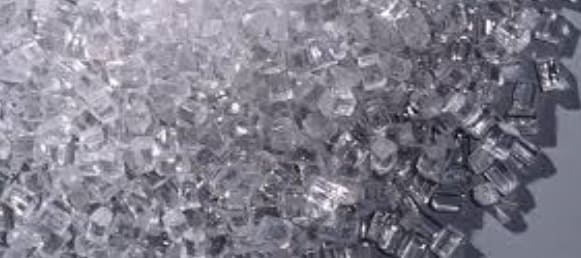Polymeric-Materials – Flexible-packaging 26-01-2022 - Arhive
Polymeric-Materials – Flexible-packaging
Crude Oil Prices Trend

-‘Flexible packaging’ – a test case for the EU’s recycling push
Lightweight soft packaging such as crisp packets or wrapping for chocolate bars is giving headaches to European recyclers who currently have little incentive to buy the collected material. Polymeric-Materials – Flexible-packaging
The European Commission will seek to address this in July with its planned revision of the EU’s packaging and packaging waste directive.
One of the key objectives of the Commission’s new circular economy action plan (CEAP), tabled in March 2020, is to ensure that “all packaging on the EU market is reusable or recyclable in an economically viable way by 2030”.
This means even complex-to-recycle packaging, such as crisp packets and wrapping for snacks or candy bars, will need to be recycled or replaced by greener options.
But making this type of “flexible packaging” recyclable is a momentous challenge for the industry because of the cumulated costs involved in the collection, sorting and recycling of these products. Polymeric-Materials – Flexible-packaging
At the end of the day, buying virgin material is often still the cheapest option for the food industry.
“The reason why flexible packaging is not recycled at the moment is because of the cost. Economically it has very little value,” said Justine Maillot from the Rethink Plastic Alliance, an environmental pressure group.
“It’s also because of insufficient volumes – flexible packaging is not collected separately in most European countries,” Maillot explains, meaning it’s usually not recycled and ends up being dumped in landfill or sent for incineration.
France and Belgium recently started collecting flexible packaging, following in the footsteps of Germany, Spain, and Italy, which started 20-30 years ago. However, improving collection does not mean the packaging will be recycled at the end of the day. Polymeric-Materials – Flexible-packaging

-Tracing the History of Polymeric-Materials
The slow crystallization of PET polyester made it a poor option for processes like injection molding. This led to the development of more molder-friendly options such as PBT. Polymeric-Materials – Flexible-packaging
While market opportunities for PET polyester in fibers for fabric (the semi-crystalline form) and in beverage bottles (the amorphous form) created substantial growth during the period from the early 1950s to the mid-1970s, the slow crystallization of the polymer made it a poor option for processes like injection molding. Early attempts to create materials for this type of conversion process resulted in poor impact resistance and the need for mold temperatures exceeding 150 C (302 F) to achieve full crystallization.
The first successful attempt to make the material more user-friendly for injection molders came from DuPont in 1978. However, almost a decade earlier, a variation on the PET chemistry was commercialized that circumvented the issues that PET exhibited. This was polybutylene terephthalate (PBT). Celanese was the first company to introduce PBT in 1969, followed closely by GE Plastics in 1972. The initial applications were in electrical and electronic markets, where it was recognized that the material properties as well as dimensions of the molded parts were more stable than those produced in nylon once the materials became equilibrated with atmospheric moisture. Polymeric-Materials – Flexible-packaging
The chemistry of PBT is very similar to that of PET, but there is a subtle difference that brings with it a mixture of advantages and disadvantages. The accompanying figure shows the chemical structure of the repeating unit in PBT. The polymer is produced by essentially the same chemical reaction used to make PET, but with the substitution of butylene glycol for ethylene glycol.
Because butylene glycol is a four-carbon alcohol and ethylene glycol is a two-carbon alcohol, the resulting polymer structure contains a longer segment of the straight carbon chain in each repeating unit. These segments move with greater freedom at a molecular level and thus dilute the strengthening and stiffening effect of the aromatic ring. Polymeric-Materials – Flexible-packaging
This enhanced molecular mobility promotes a faster rate of crystallization in PBT. Consequently, PBT is always semi-crystalline in both its filled and unfilled forms.

‘Flexible-packaging’ – a test case for the EU’s-recycling push
-Tracing the History of Polymeric-Materials
–Sustainably–Reducing-Odor and Enhancing Garments with Antimicrobial-Treatments
-Worldwide Regulations on Lithium-ion-Battery-Recycling
-New supply-chain-problems prolong the big HDPE divide as imbalances build
–Ring-Container-Technologies introduces new PET-packaging for carbonated-drinks
–Huber-Engineered-Materials completes acquisition of Magnifin
Polymeric-Materials – Flexible-packaging
